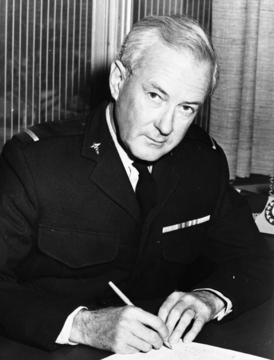MORGAN, David Archibald Stevenson
| Service Number: | O4398 |
|---|---|
| Enlisted: | 19 March 1945 |
| Last Rank: | Squadron Leader |
| Last Unit: | Not yet discovered |
| Born: | Yorketown, South Australia, 29 April 1920 |
| Home Town: | Not yet discovered |
| Schooling: | Unley High School, South Australia |
| Occupation: | Medical Practitioner |
| Died: | Canberra, Australian Capital Territory, Australia , 13 May 1995, aged 75 years, cause of death not yet discovered |
| Cemetery: | Not yet discovered |
| Memorials: |
World War 2 Service
| 19 Mar 1945: | Enlisted |
|---|
Korean War Service
| 25 Jun 1950: | Involvement Squadron Leader, O4398 | |
|---|---|---|
| Date unknown: | Honoured Officer of the Order of the British Empire |
Help us honour David Archibald Stevenson Morgan's service by contributing information, stories, and images so that they can be preserved for future generations.
Add my storyBiography contributed by Annette Summers
David Archibald Stevenson Morgan was born in Yorketown, South Australia on 29th April 1920. He was the son of Robert John Wilshire Morgan, son of Matthew Morgan and Muriel Dorothy Brakspear, nee Stevenson, daughter of James Black Stevenson. He had two sisters, Barbara and Joan. He was educated at Unley High School and studied medicine at the University of Adelaide, graduating MB BS in 1943. He completed his residency at the RAH, the ACH and Northfield Mental Hospital, in 1944.
Morgan enlisted in the permanent RAAF, on 19th March 1945, as a flight lieutenant. His next of kin, at that time, was nominated as Ann Morgan. He served on medical duties at 4 Personnel Depot, Adelaide and at 1 Medical Receiving Station, Darwin and 12 Squadron, Darwin, until his deployment with BCOF in Japan. He served in BCOF Japan from 1948 to 1950, at the rank of Squadron Leader. He arrived in Japan on 15th July 1948 and served as a medical officer in 81 Wing. This Wing was disbanded and he remained medical officer to 77 Squadron. He also served in 82 Squadron, 6 RAAF Hospital and 381 Base Squadron. He was promoted to Wing Commander and was posted as the senior medical officer at 391 Base Squadron in Korea, from 1950 until 1953. He was the senior medical officer responsible for the standard of health of all the Royal Australian Air Force personnel in Japan and Korea. With the build-up of Commonwealth troops in Korea, Morgan established a casualty air evacuation team and organised the medical air evacuation of all British casualties. This evacuation chain was the vital link for the safe transfer of the wounded from Brigade or Division to the security of the British base hospital, in Kure in Japan. This evacuation chain was responsible for the air evacuation of over 10,000 patients from Korea. Additional to this he was also responsible for the safe evacuation of casualties from Japan to Australia. The efficiency of the evacuation team was entirely due to the efforts of Morgan. He was appointed an Officer of the Most Excellent Order of the British Empire, on 1st June 1953, for his outstanding service in organising medical air evacuation of casualties during the Korean War. He was issued the Active Service Medal 1939–1945; the Australian Service Medal 1945-1976; the Korea Medal; the United Nations Service Medal; the National Medal with two clasps; the Queens’ Silver Jubilee Medal, and the BCOF Japan Medal 1946–1952.
Morgan undertook a diploma in public health at the University of Sydney in 1968. He was posted as CO of 4 RAAF Hospital at Butterworth, Malaysia from 1969 until 1971. He was then promoted to Air-Vice Marshall and posted as the Director General Health Services Air Force, with the Department of Defence in Canberra, in 1971 until his retirement in 1980. He was appointed Honorary Physician to Her Majesty the Queen from 15th September 1975. He was appointed an Officer in the Order of Australia (AO) on Australia Day 1980. His citation stated; For distinguished service as Director-General of Air Force Health Services... He was appointed to his present post of Director-General of air Force Health Services on 19 April 1971. In the appointment he has been responsible for the maintenance of the health standards of the Royal Australian Air Force, the provision of medical and dental service support to operations in the field. Throughout the period of his appointment, his task has been made more difficult by a serious shortage of medical officers, the increasing costs of medical resources and health care, and a high training commitment. By outstanding leadership, great personal example and dedication in the discharge of his responsibilities, Air Vice-Marshal Morgan has been able to meet effectively the demands of his appointment and ensure the maintenance of the high standards of health and fitness that are essential to the operational capability of the Royal Australian Air Force. Air Vice-Marshal Morgan’s distinguished service in this important and responsible position reflects great credit upon himself, the medical profession and the Royal Australian Air Force.
He lived in Colvin Street, Hughes, Canberra and had married Josette Marie Esquedin. They had a son and a daughter. He enjoyed music and reading and was a member of the Aviation Medical Society. David Archibald Stevenson Morgan died in Canberra on 30th May 1995. He was survived by his wife Josette, son David and daughter Helene.
Sources
Blood, Sweat and Fears II: Medical Practitioners of South Australia on Active Service After World War 2 to Vietnam 1945-1975.
Summers, Swain, Jelly, Verco. Open Book Howden, Adelaide 2016
Uploaded by Annette Summers AO RFD










